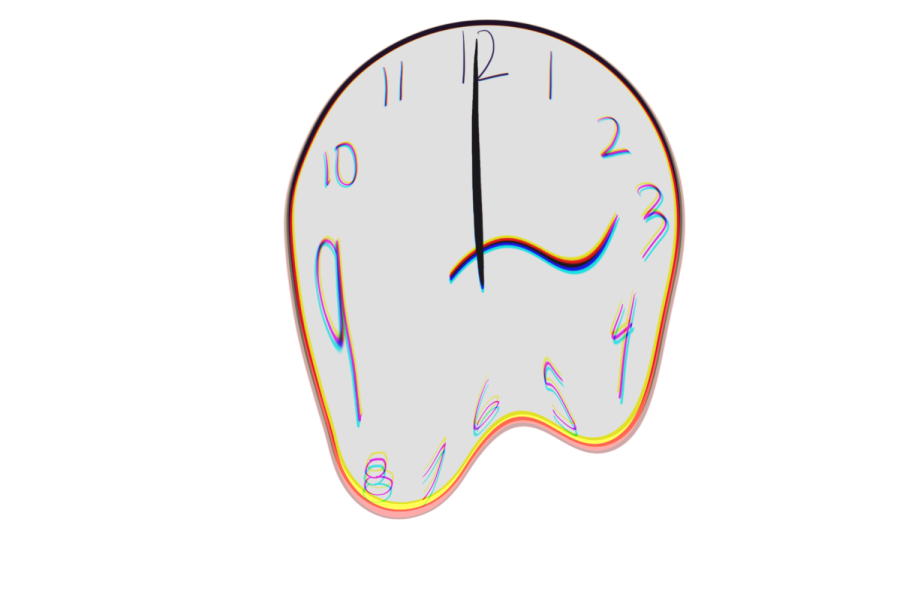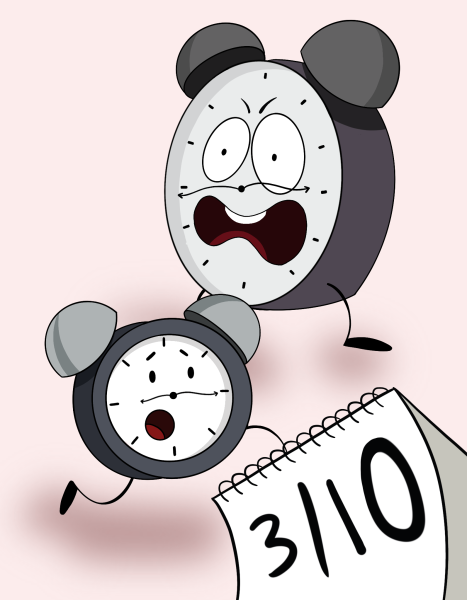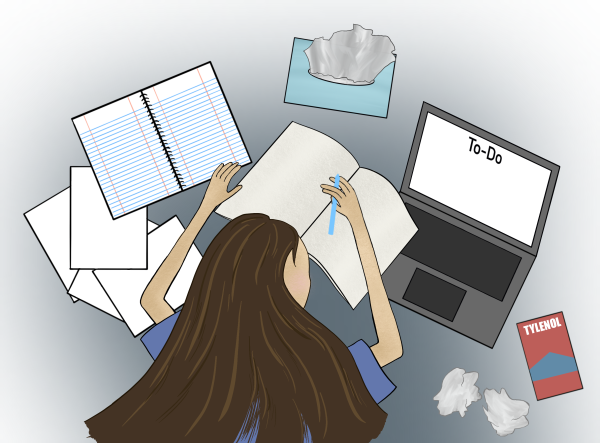Shorter Class Periods May Ease Student Burnout
Viscous hours trudge by and time can feel distorted as students attempt to focus during their 90 minute periods.
With the 2021 school year well underway and semester finals fast approaching, our 1st few months back on campus have allowed students and teachers alike to reflect on their experiences back at school. For more students than typical in past years, this is their 1st on-campus experience at Campolindo. Getting used to Campo’s learning environment is no easy feat; across all classes, students are still adjusting.
Aside from the Monday class schedule (a 45 minute period time frame), each class period at Campo is exactly the same: 90 minutes. For many students, this somewhat lengthy time frame is a new experience, considering that class periods in most local middle schools were just under 1 hour. Even upon our return to school last spring, class periods were only 75 minutes.
The effectiveness of 90 minute periods is difficult to measure. From a student’s perspective, slightly shorter class periods may actually be more beneficial to the learning process.
1 of the main problems with keeping students seated at desks for such large blocks of time is engagement. Sophomore Cassidy Keely explained she “noticed that teachers tend to pack a lot into the 45 minute periods. But on the other hand, the 90 minute classes are too much and they’re very dragged on to the point where [she] just [loses] focus.”
Finding the class period “sweet spot” is a complex and involved endeavor. Too long and students shut down, get distracted, and disengage from learning the lesson. Too short and students don’t receive enough time to fully absorb and retain any material.
However, there may be a way to make longer class periods more manageable. Keely said “[her] brain needs a break sometimes.” Some Campo teachers are offering students the chance to get up, move around, and go outside to get a breath of fresh air before returning to the lesson.
Keely confirmed that “in the classes that [she does] get to take a break or walk, [she] feels much more revitalized after getting a fresh start.”
Even with breaks making the 90 minute periods more doable, a slightly shorter stretch may still be a better, more productive option. Sophomore Lauren Beld said that “a good in between is best for [her].” referring to somewhere between an hour and our current period length.
Depending on the makeup of the class, AP European History teacher Paul Verbanszky “[incorporates breaks] based on student engagement and the amount of focus [he] sees in students.” Seeing extreme value in breaks, Verbanszky gauges how attentive as well as how distracted his students are during class and based on these observations, he is able to determine if a break would be beneficial.
The environment and circumstances to which students learn at Campo is tremendously important. The school community will continue to work towards creating the best experience for students in all years to come.
Your donation will support the student journalists of Campolindo High School's The Claw. Your contribution will allow us to produce more issues and cover our annual website hosting costs.

Sophomore Grace Franklin has an interest in art and improving her digital art skills through The Claw Art Staff. Franklin has a deep interest in video...


